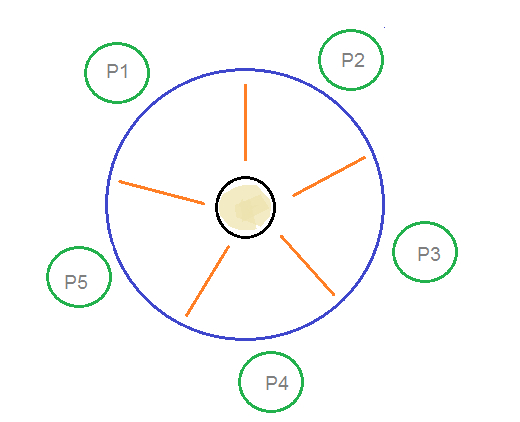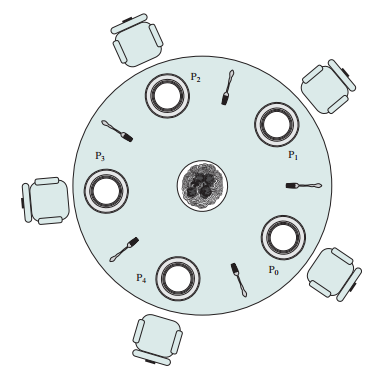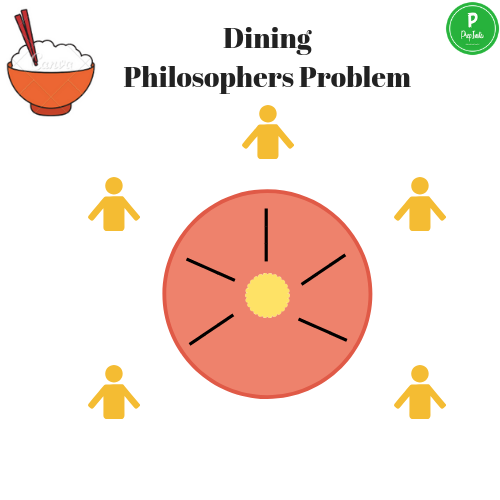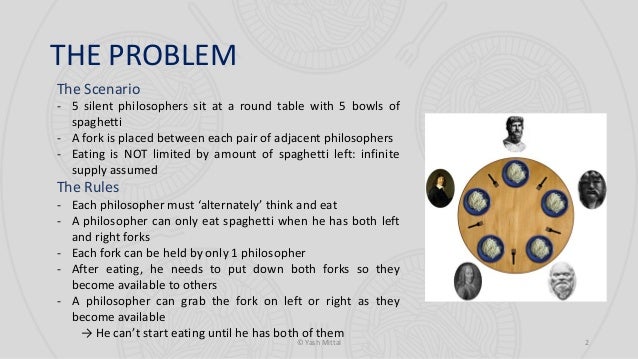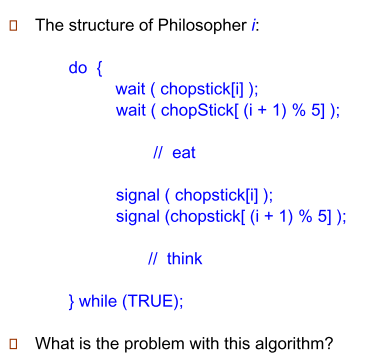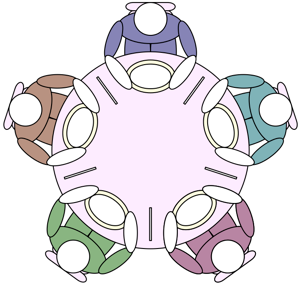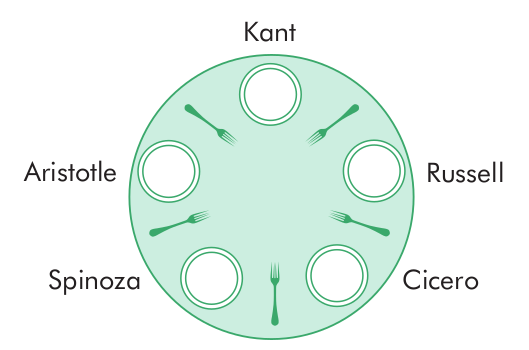Dining Philosophers Problem In Operating System

In operating system this concept used in process synchronization.
Dining philosophers problem in operating system. I ve been searching for over an hour. It illustrates the challenges of avoiding a system state where progress is not possible a deadlock. In computer science the dining philosophers problem is an example problem often used in concurrent algorithm design to illustrate synchronization issues and techniques for resolving them. We illustrate monitor concepts by presenting a deadlock free solution to the dining philosophers problem.
There is a bowl of rice for each of the philosophers and 5 chopsticks. Taken at face value it is a pretty meaningless problem but it is typical of many synchronization problems that you will see when allocating resources in operating systems. The dining philosophers problem states that there are 5 philosophers sharing a circular table and they eat and think alternatively. It would be even better if the implemented solution is tanenbaum s solution described here.
It was originally formulated in 1965 by edsger dijkstra as a student exam exercise presented in terms of computers competing for access to tape drive peripherals. Program for dining philosophers problem in c. In computer science the dining philosophers problem is an example problem often used in concurrent algorithm design to illustrate synchronization issues and techniques for resolving them. It only tells when to enter and exit the segment.
Prerequisite process synchronization semaphores dining philosophers solution using monitors the dining philosopher problem the dining philosopher problem states that k philosophers seated around a circular table with one chopstick between each pair of philosophers. I m looking for an application of the dining philosophers problem. A philosopher may eat if he can pickup the two chopsticks adjacent to him. The problem was created in 1965 by e.
Monitor based solution to dining philosophers. Monitor is used to control access to state variables and condition variables. Dining philosophers the dining philosophers problem is a classical synchronization problem. A philosopher needs both their right and left chopstick to eat.
We follow above solution to avoid dead lock condition. Computer science mca operating system. A hungry philosopher may only eat if. Clever use of operating system and c capabilities to streamline your code.
The dining philosophers problem is another classic synchronization problem which is used to evaluate situations where there is a need of allocating multiple resources to multiple processes. Soon after tony hoare gave the problem. There is one chopstick between each philosopher. Is there some real life system that faces the concurrency problem of the dining philosophers problem and implements a solution.
The book again chapter 6 has an excellent description of dining philosophers.

